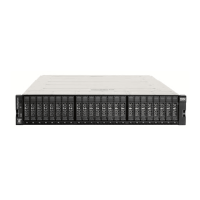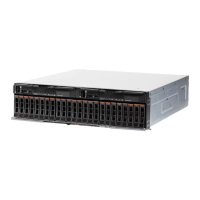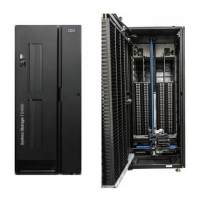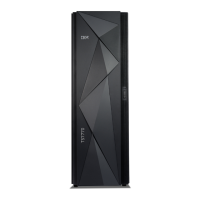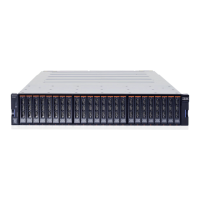Storage modes
Your storage system is configured with a specific storage mode.
Each mode is tailored to a use case for a high capacity solid-state disk.
Attention: You cannot switch between storage modes, as this is a destructive action and causes data
loss.
Maximum capacity
Maximum capacity mode is the most flexible and is useful in an environment where the entire capacity of
the unit is needed.
The maximum capacity storage mode is used to create logical units and assign access policies as needed.
This mode is well-suited for deployments where the storage system is mirrored or preferred read
mirrored with other storage. (In a preferred read mirror implementation, data is read from the storage
with the lowest latency (the flashcards in the storage system).
Data acquisition
This specialized storage mode creates one logical unit and assigns access policies to all interface ports.
This data acquisition mode is used to present the entire storage space to all connected devices.
JBOF
The Just a Bunch of Flash (JBOF) storage mode automatically creates one logical unit for each flashcard
present in the system.
The administrator can then assign access policies as needed. JBOF mode is useful in an environment
where a host-based software RAID can be created to increase redundancy across the flashcards.
Active spare
The active spare storage mode automatically uses the last flashcard in the unit as a spare. This function
provides another level of redundancy when a flashcard fails, in an environment where some of the
storage capacity can be sacrificed for this additional data redundancy.
With the active spare storage mode, if a card experiences a recoverable failure (that is, a flash chip fails),
the data is migrated off the failed card and onto a designated spare. The failed card is later replaced and
the newly installed card becomes the new active spare storage mode. Note that the flashcards are not
hot-swappable. In this storage mode, there are still a few components that are not protected by active
spare storage mode, so there is a risk of an unrecoverable component failure. If a deployment requires no
single point of failure, mirrored storage systems that use the maximum capacity storage mode is the
preferred solution.
Attention: The failed card must be replaced immediately after the data replication is complete.
Creating logical units
The most common management activity on the storage system is logical unit creation.
About this task
Basic logical unit creation activities are covered here. For more detail, see the Web Interface Guide.
Important: For specific operating system and application optimizations for logical units, see the storage
system Integration Guide.
To create a logical unit, complete the following steps:
IBM FlashSystem 710 User’s Guide 15
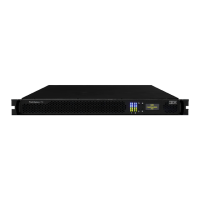
